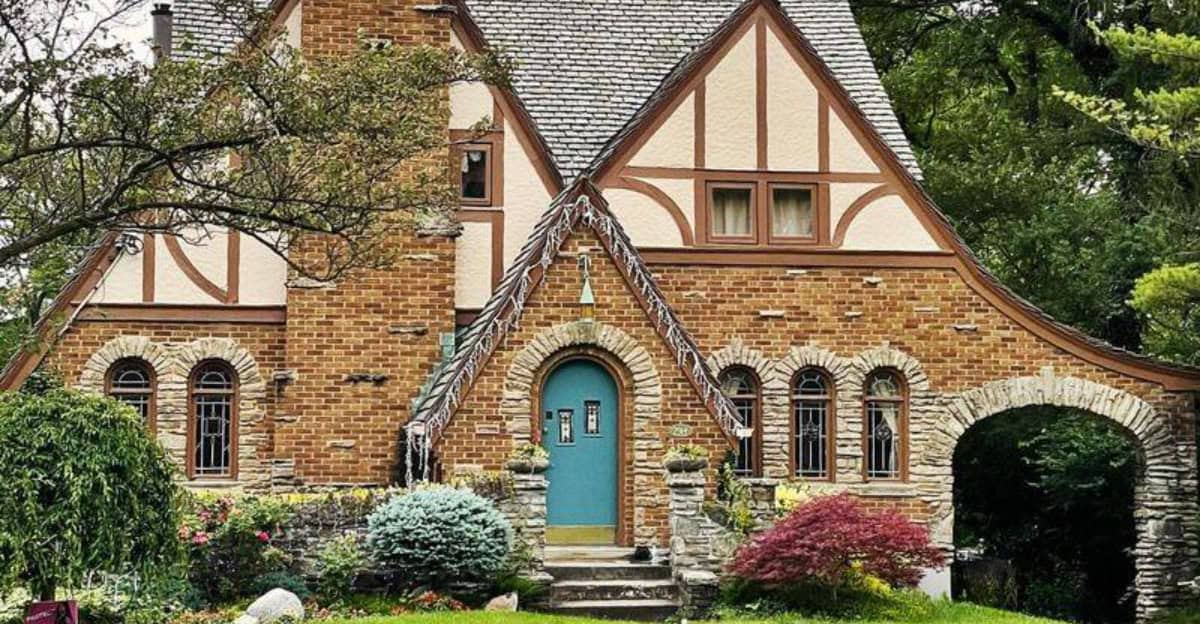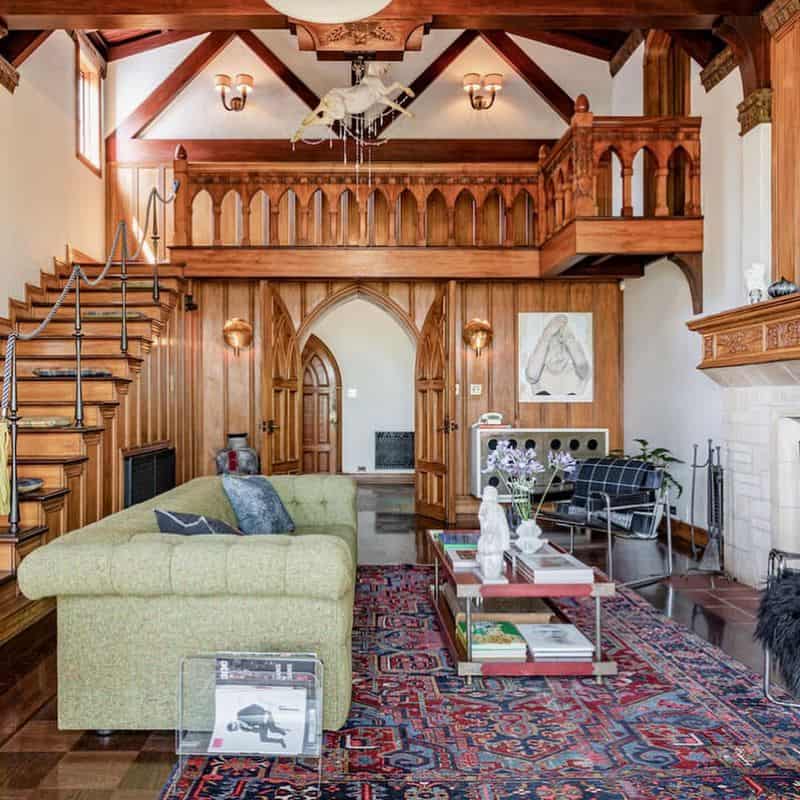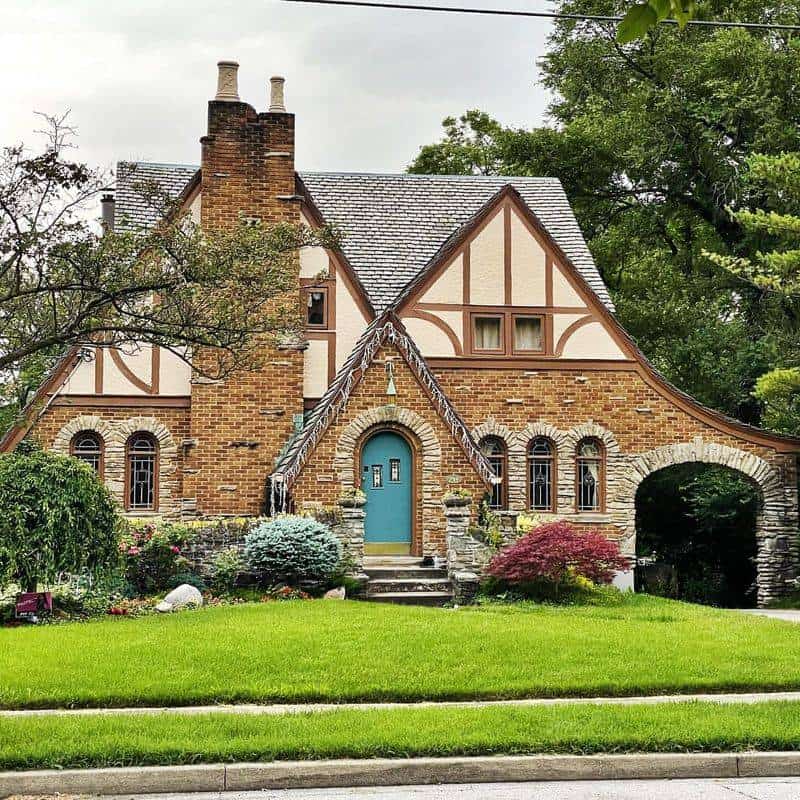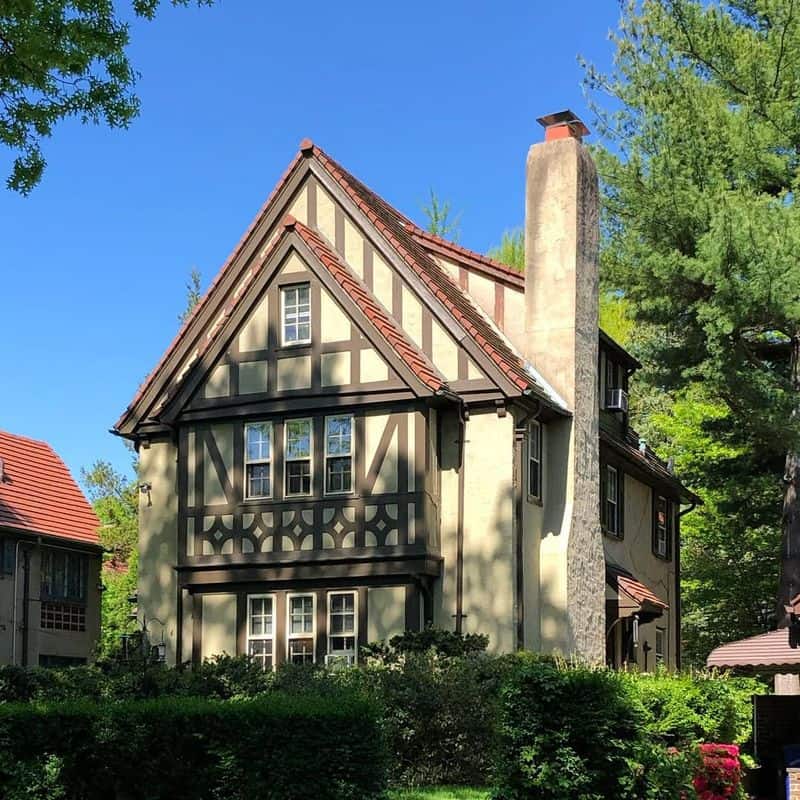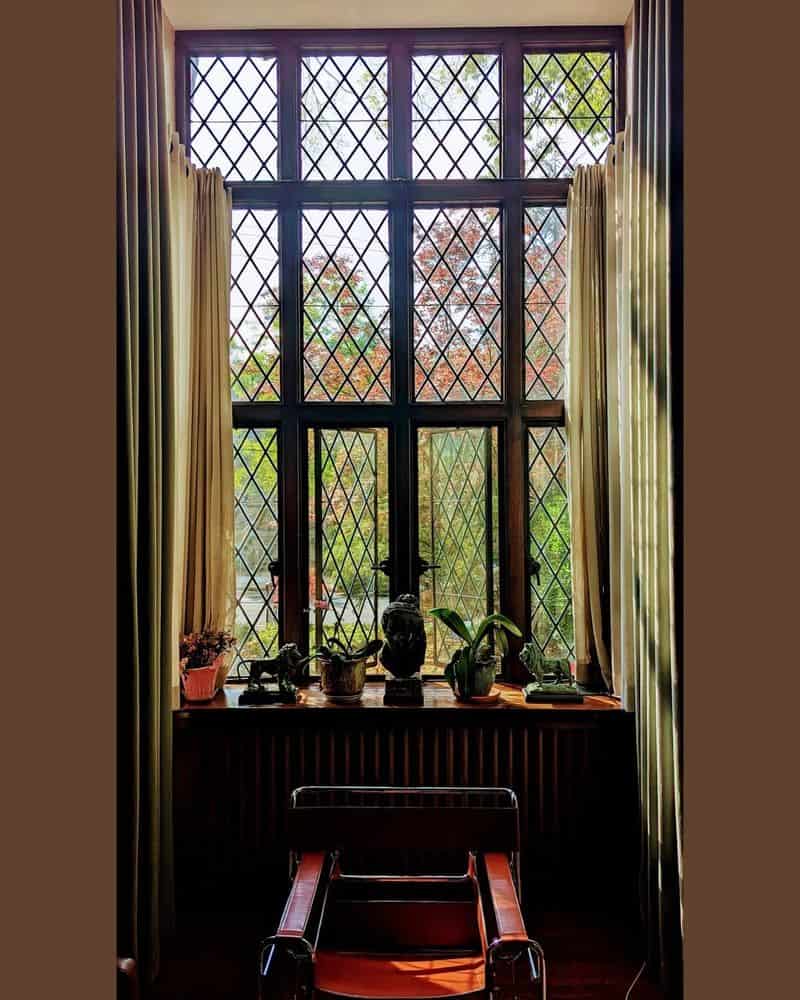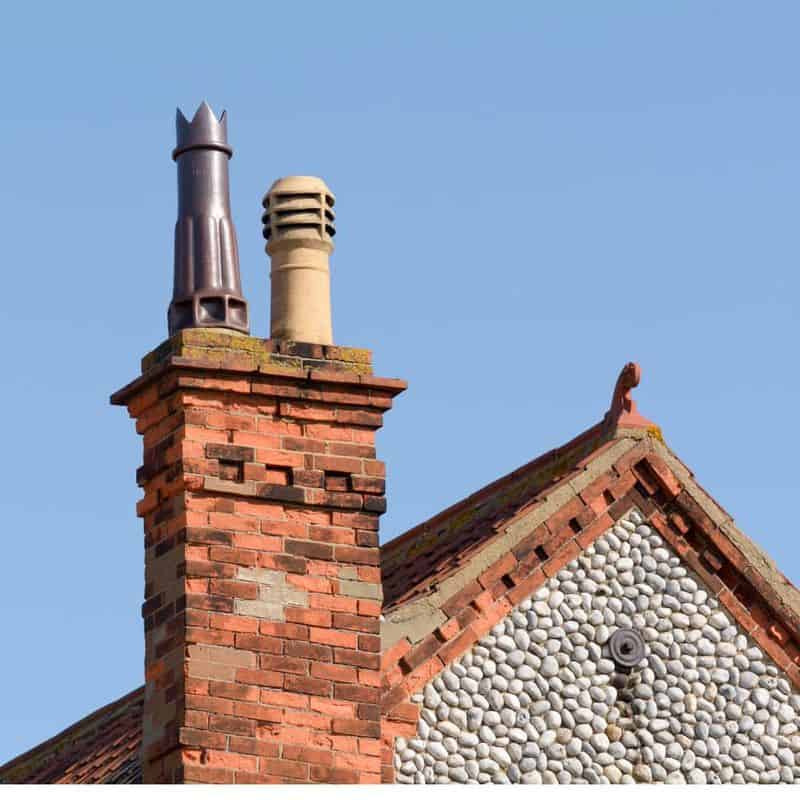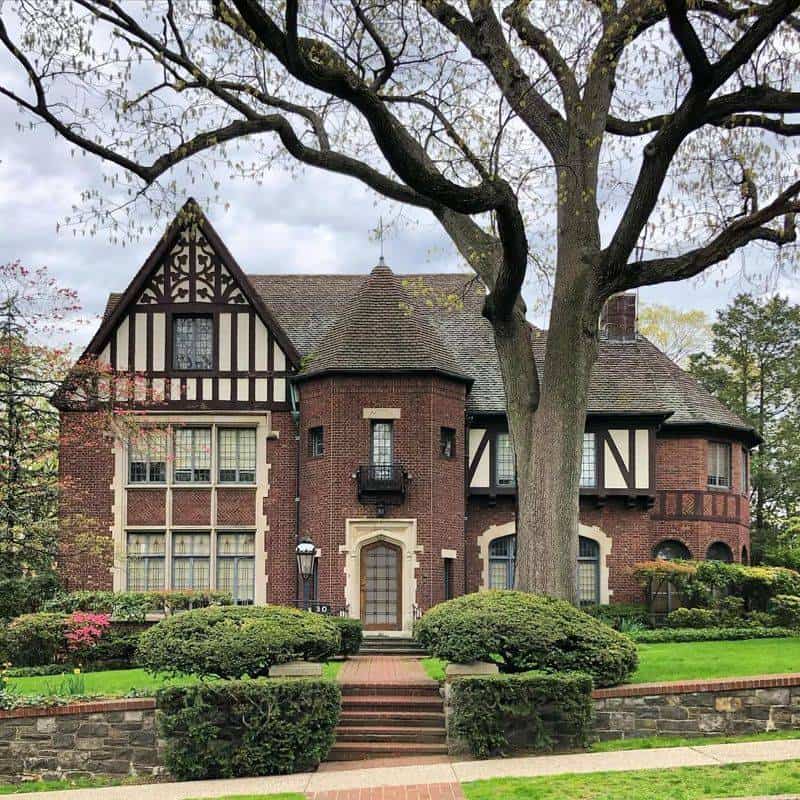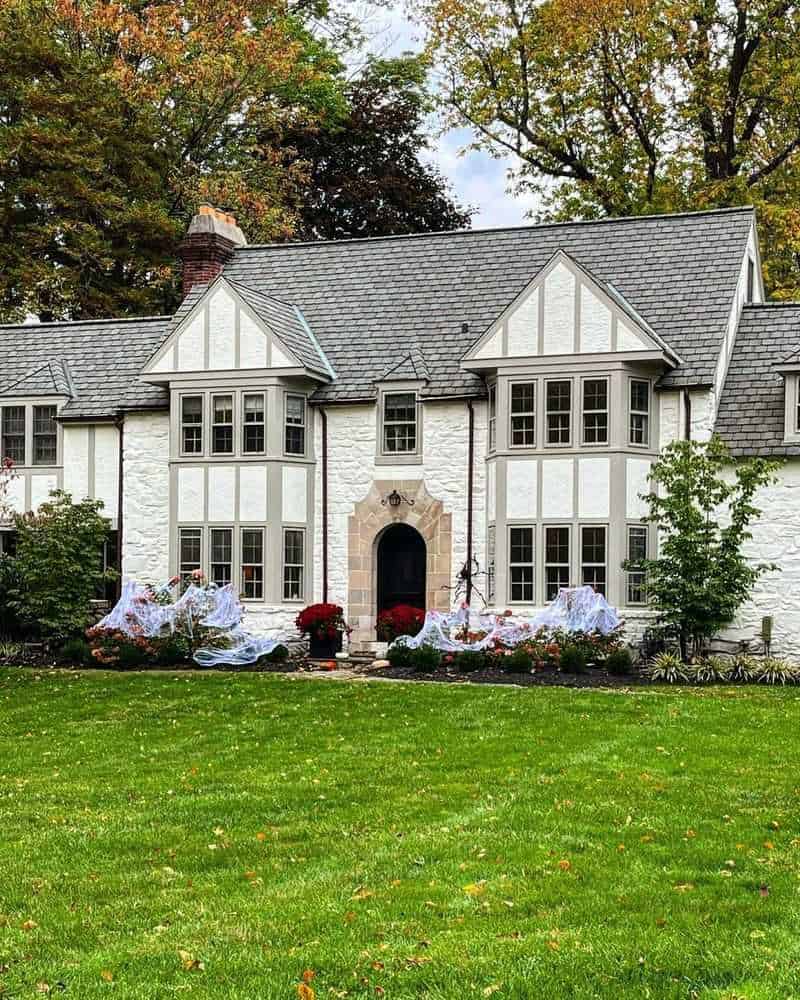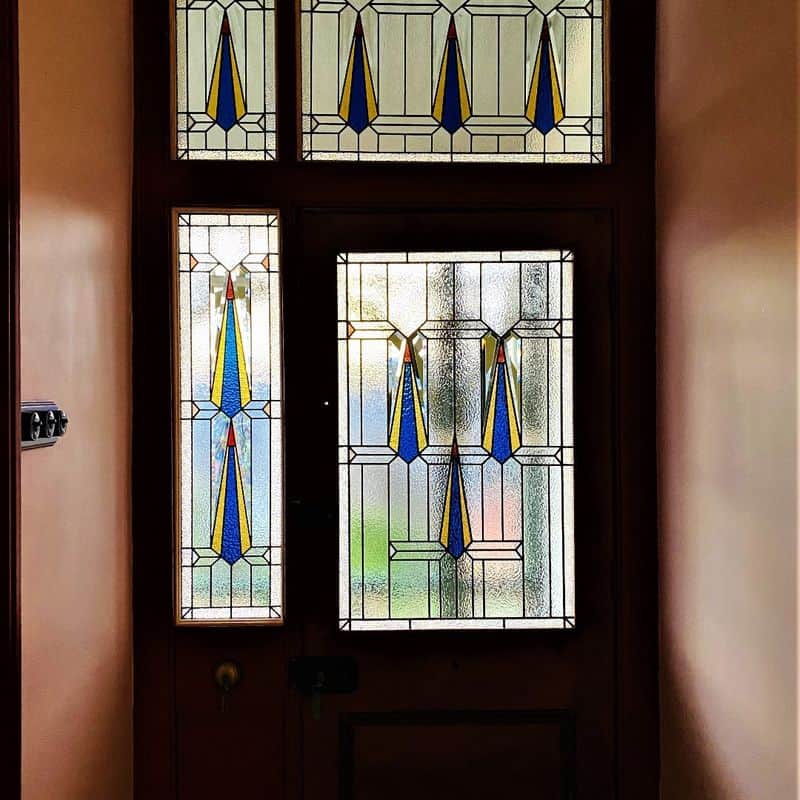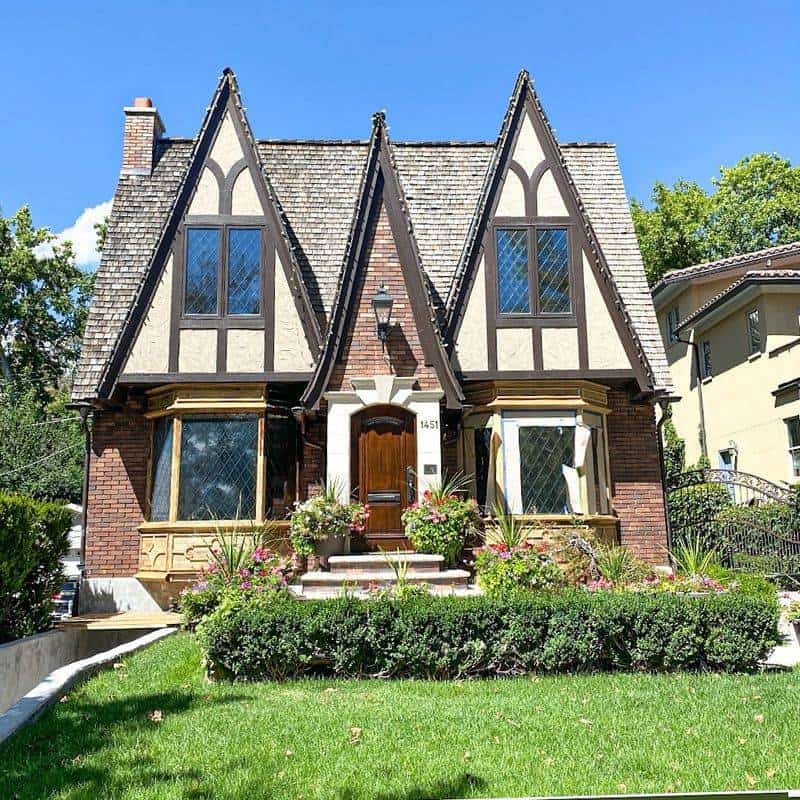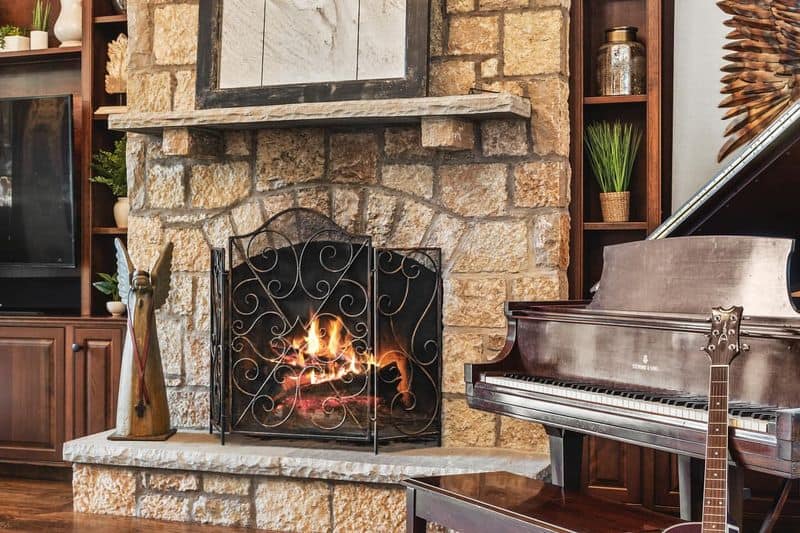Tudor houses, with their charmingly antiquated allure, are making a stylish comeback.
These homes, often reminiscent of romantic tales and old-world craftsmanship, capture the imagination of those longing for a blend of history and aesthetic appeal.
Join the journey through the whimsical world of gables, beams, and mullioned windows, where every nook and cranny whispers secrets of the past, yet fits seamlessly into today’s modern living standards.
1. Exposed Wooden Beams
Ah, the allure of exposed wooden beams. Nothing screams ‘I’m vintage yet fabulous’ quite like wooden beams stretching across your ceiling.
These beams aren’t just timber; they’re history etched in oak. Imagine sipping tea under centuries-old wood, pondering how many noggins have escaped bonking over the years.
Each beam tells a story—perhaps of medieval feasts or grand gatherings. Their rustic charm adds warmth and character to a room, making it more than just four walls.
Plus, they give spiders a new workout routine! Who knew beams could be so chic?
2. Steeply Pitched Roofs
Steeply pitched roofs are like the drama queens of the Tudor world. Rising high and mighty, they shout, ‘Look at me!’ These roofs don’t just protect; they make a statement.
Their impressive angles are designed for dramatic effect, and maybe to keep snow from overstaying its welcome.
For those with adventurous spirits, these roofs invite you to imagine sledding down them—but please, keep it in your head.
Their grand stature also offers extra attic space, perfect for hiding old secrets or just your Christmas decorations.
3. Half-Timbering
Half-timbering isn’t just a quirky tongue-twister; it’s the quintessential hallmark of Tudor style. Those iconic dark beams crisscrossing over light plaster create an unmistakable aesthetic. It’s as if the house is wearing suspenders.
Back in the day, this was cutting-edge construction tech, blending structure with style. Today, it’s a nod to craftsmanship and tradition.
The design is perfect for anyone who wants their home to look like it’s in an eternal game of tic-tac-toe—only this game is always a win for charm.
4. Mullioned Windows
Mullioned windows are the eyes of a Tudor home, peering knowingly into the modern world. Their lattice of leaded glass panes adds a sprinkle of medieval magic to any room.
Each window is like a time machine; peer through and you might expect to see knights on horseback or a lady in waiting.
These windows aren’t just pretty; they play with light beautifully, creating a dance of shadows and sunbeams across your space. And yes, it’s still the perfect spot for a cat to languidly sunbathe.
5. Chimney Pots
Chimney pots adorn the rooftops like crowns on Tudor houses, and boy, do they rule! These clay or stone beauties aren’t just there to look posh; they serve a practical purpose, aiding in draft regulation.
They give chimneys character, like hats give character to a person. Each pot can be unique, adding a touch of personal flair to an otherwise utilitarian structure.
As smoke gracefully drifts skyward, you can almost hear the crackling of a warm fire, perfect for roasting marshmallows and medieval tales alike.
6. Brick and Stonework
Brick and stonework in Tudor homes is like a good cheese platter—rich, textured, and always impressive. The mix of red bricks and rugged stones tells tales of bygone eras when craftsmanship was king.
These materials not only provide durability but a delightful aesthetic that whispers elegance. Each brick seems to hold a secret, each stone a story.
Admire the craftsmanship as you sip your coffee, feeling like royalty in your little castle, even if the only scepter you wield is a TV remote.
7. Ornate Doorways
Ornate doorways in Tudor homes are the grand welcomes that every visitor deserves. You don’t just enter a Tudor house; you make an entrance through a door that’s practically an art piece.
These doors, with their intricate carvings and iron accents, whisper tales of nobility and elegance. They’re sturdy sentinels, guarding the secrets within, while inviting you to step into history.
Beyond the aesthetics, they provide security and insulation, proving once again that old-school can be cool and functional too.
8. Leadlight Windows
Leadlight windows are like the jewelry of Tudor homes, capturing light and casting rainbow patterns indoors. These windows add a splash of color and whimsy, making any space pop with personality.
Each piece of glass tells its own vivid story, contributing to a larger, vibrant narrative. Beyond beauty, they offer privacy without sacrificing style.
It’s like having your cake and eating it too—only in this case, the cake is a delightful array of colored glass that changes with the sunlight.
9. Gables and Dormers
Gables and dormers are the playful eyebrows of a Tudor house, giving character to the roofline. With sharp angles and intricate woodwork, they create visual interest that’s hard to ignore.
These features add dimension, making the architecture pop against the skyline. Gables often house attic spaces, while dormers bring light and air to upper rooms.
They’re quirky yet functional, like a hat with a built-in fan, proving once again that practicality and aesthetics can live happily ever after.
10. Large Fireplaces
Large fireplaces in Tudor homes are nothing short of magnificent, often serving as the heart of the home. These grand structures, with their stone facades and wooden mantels, invite you to warm up by the fire.
They’re not just for aesthetics; they offer heat and a cozy gathering spot for storytelling and relaxation.
Imagine the crackle of logs and the soft glow of embers as you unwind with a good book. It’s a nod to simpler times, where the fireplace was the original social network.

